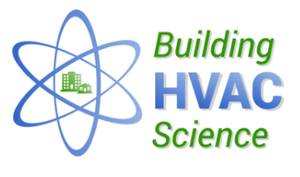
Building HVAC Science -Comfort, health & energy efficiency
Bill Spohn
Energy Rating, Test and Balance, Air Flow , Measurement and MORE
- 43 minutes 38 secondsEP202 Unlocking High-Performance HVAC: Insights with David Richardson (January 2025)
In this episode of the Building HVAC Science Podcast, Eric Kaiser welcomes David Richardson from the National Comfort Institute. David shares his journey from starting as a “gopher” for his father’s HVAC business to becoming a leading advocate and instructor for high-performance HVAC systems. The discussion delves into the evolution of HVAC standards, focusing on the importance of measurements, diagnostics, and craftsmanship in delivering comfort, safety, and energy efficiency.
David introduces the concept of high-performance HVAC, emphasizing the importance of field measurements to diagnose and solve system inefficiencies. The conversation highlights tools like the TrueFlow® Grid, which have revolutionized testing accuracy and streamlined processes. They also touch on customer engagement, the challenges of breaking industry habits, and the importance of a growth mindset when adopting new practices.
The episode concludes with David encouraging HVAC professionals to embrace small, consistent improvements, measure system performance on their own projects, and engage with the growing community of like-minded industry peers who are eager to share knowledge.
Here is David’s LinkedIn profile: https://www.linkedin.com/in/david-richardson-41502112/
NCI’s HOMEPAGE: https://www.nationalcomfortinstitute.com/
NCI Store on TruTech website: https://trutechtools.com/nci-store.html
Find the Digital TrueFlow® Grid at TruTechTools®: https://trutechtools.com/trueflow
This episode was recorded in January 2025.
24 January 2025, 12:00 pm - 45 minutes 53 secondsEP201 Evolving HVAC Strategies: Solving Problems for People, Not Just Homes (December 2024)
In this insightful episode of Building HVAC Science, co-hosts Bill Spohn and Eric Kaiser reconnect with Silas Hoeppner for a follow-up discussion that dives deeper into optimizing comfort and efficiency in existing homes. Silas shares his journey of transitioning from a house-centric approach to an occupant-centric model in his work, detailing the lessons he’s learned and how these shifts have reshaped his philosophy.
You can find more details on Silas’ backstory in Episode 193, found here: https://www.buildinghvacscience.com/ep193-building-performance-with-purpose-silas-hoeppners-journey-november-2024/
Silas explains the importance of understanding homeowners’ unique goals and success metrics rather than imposing a one-size-fits-all solution. Through his experiences, he emphasizes the value of asking the right questions, effectively addressing comfort issues, and avoiding assumptions about efficiency or customer priorities. Silas also explores the nuances of balancing technical precision with customer communication, highlighting real-life examples of problem-solving that reflect this paradigm shift.
The conversation touches on common misconceptions, such as the oversizing of heat pumps and misplaced priorities in energy audits. Silas concludes by offering actionable advice for listeners: prioritize clear communication, understand the occupants’ real needs, and ensure solutions align with both immediate and long-term goals.
Here is his LinkedIn profile: https://www.linkedin.com/in/silasjames/
This episode was recorded in December 2024.
17 January 2025, 12:00 pm - 42 minutes 47 secondsEP200: 200 Episodes Strong: Reflecting on the Building HVAC Science Journey with Bryan Orr (December 2024)
In this milestone episode, Bill Spohn and co-host Eric Kaiser welcome Bryan Orr, the instigat-ORR behind the creation of the Building HVAC Science podcast. They dive deep into the podcast's origin story, reflecting on how Bryan's love for audio and creative expression sparked a wave of content that has deeply impacted the HVAC industry. Bryan shares his journey from audio experimentation as a child to podcasting professionally, highlighting the values of curiosity, passion, and the abundance mindset in both personal and professional life.
Bill and Bryan discuss how podcasting has shaped their careers and relationships, emphasizing the joy of connecting with people, sharing knowledge, and leaving a legacy. Bryan lauds Bill’s warm, engaging voice and thoughtful approach to podcasting, while Bill credits Bryan for mentoring him into the space. They share insights into the challenges and rewards of consistent content creation and how the show has evolved to explore topics that truly inspire them.
Looking forward, Bill envisions a gradual transition, with Eric taking on more of the driving role while Bill continues as a passionate participant. The episode concludes with a plug for the HVACR Training Symposium, an event Bryan leads to connect industry professionals and advance the field.
HVACR SCHOOL WEBSITE (Chock full of resources!):https://hvacrschool.com/
HVAC School Podcast: https://hvacrschool.com/podcast/
6th Annual Symposium: https://hvacrschool.com/events/6th-annual-hvac-r-training-symposium/
This episode was recorded in December 2024.
10 January 2025, 12:00 pm - 34 minutes 7 secondsEP199 Rebuilding Lives: The Mission of Second Chance University with Danny Huffman (December 2024)
In this powerful episode of the Building HVAC Science Podcast, hosts Bill Spohn and Eric Kaiser bring on a truly inspiring guest, Danny Huffman, founder of Second Chance University. Danny shares the transformative mission behind his organization, which helps individuals transitioning from incarceration, substance abuse, or homelessness rebuild their lives through HVAC training, life skills development, and career preparation.
Danny’s passion shines as he recounts his journey, from growing up on a Texas farm to creating a program that changes lives. Listeners will learn how Second Chance University’s intensive six-week program provides participants not only with technical expertise but also the mental tools and confidence needed to succeed in life and work. With partnerships from organizations like TruTech Tools, CareerSource, and others, Danny emphasizes the importance of doing the right thing and fostering community safety and success.
This episode is a must-listen for anyone interested in workforce development, second chances, or the transformative power of education and mentorship.
Here is Danny’s Linkedin: https://www.linkedin.com/in/dannyhuffman/ And a link to his website: https://2ndchanceuniversity.org/
And his email: [email protected]
This episode was recorded in December 2024.
3 January 2025, 12:00 pm - 37 minutes 18 secondsEP198 Unlocking Building Potential: Ross Trethewey on Curiosity, Collaboration, and Innovation (December 2024)
In this episode of Building HVAC Science, Bill Spohn and Eric Kaiser are joined by Ross Trethewey, a mechanical engineer, consultant, and building science advocate who also appears on This Old House. Ross shares his journey from being a fifth-generation plumber to becoming a professional engineer with a passion for high-performance buildings. He discusses the critical interplay between building systems and science, highlighting his work in residential and commercial design through his firm, TE2 Engineering. He also delves into his unique projects, including a World War I lookout tower retrofit, which underscores the importance of holistic building assessments.
The conversation transitions into the challenges of translating the wealth of building science knowledge into practical applications. Ross emphasizes the need for a structured approach, like checklists or decision trees, to guide professionals through complex building scenarios. He praises initiatives like Better HVAC, which aim to centralize resources for the industry. Finally, Ross explores the importance of mentorship, shared resources, and ongoing learning, advocating for tools like ACCA Manual J, the Passive House Planning Package to prioritize impactful changes in building performance.
Ross’ LinkedIn: https://www.linkedin.com/in/rosstrethewey/
Ross’ Engineering business:http://www.te2engineering.com/
This Old House on YouTube: https://www.youtube.com/user/thisoldhouse
Passive House Planning Package: https://passivehouse.com/04_phpp/04_phpp.htm
Our episode with Adam from Heat Geeks: https://www.buildinghvacscience.com/ep176-empowering-engineers-the-heatgeek-approach-to-high-efficiency-heating-with-adam-chapman-july/
Building Science Corporation classes and events: https://buildingscience.com/upcoming-events-and-training
Coffee and Caleffi webinars: https://www.caleffi.com/en-us/education/coffee-caleffitm
Enrico Bonilauri’s Emu hands on classes: https://emupassive.com/training/
Pretty Good House Concepts: https://www.prettygoodhouse.org/
Pretty Good House Book: https://www.amazon.com/Pretty-Good-House-Michael-Maines/dp/1641551658
Our episode on Pretty Good House: https://www.buildinghvacscience.com/ep105-whats-a-pretty-good-house-with-dan-kolbert-and-chris-briley-dec-2022/
Allison Bailes’ book: https://trutechtools.com/hardcover-a-house-needs-to-breathe-or-does-it.html
BetterHVAC website: www.BetterHVAC.org
Our episode with Shawna Henderson of BlueHouse Energy: https://www.buildinghvacscience.com/ep147-building-science-haiku-with-shawna-henderson-november-2023/
HVACR School Symposium: https://hvacrschool.com/events/6th-annual-hvac-r-training-symposium/
Rocky Mountain Institute Green Upgrade Calculator: https://greenup.rmi.org/
The National Institute of Building Sciences: Whole Building Design guide: https://www.wbdg.org/whole-building-design
Residential Energy Book by John Kirgger, 7th edition (530 pages):: https://srmi.biz/product/residential-energy/
Residential Energy Book by Krigger & Dorsi, 2004 edition (320 pages):: https://www.amazon.com/Residential-Energy-Savings-Existing-Buildings/dp/1880120127
This episode was recorded in December 2024.
27 December 2024, 12:00 pm - 34 minutes 49 secondsEP197 Asbestos, Air Sealing, and ERVs: Navigating Home Renovations with Science (December 2024)
In this engaging Building HVAC Science Podcast episode, hosts Bill Spohn and Eric Kaiser welcome Dr. Allison Bailes, a renowned building science expert, to discuss his ongoing home remodeling journey. Allison shares his firsthand experiences of retrofitting a 1960s ranch home in Georgia, uncovering challenges, lessons, and unexpected discoveries along the way.
Allison dives deep into the realities of balancing technical expertise with practical decision-making, from asbestos abatement to air sealing, insulation, and innovative systems like Zehnder ERVs. He highlights the importance of communication with contractors, dynamic environmental factors like radon and air leakage, and the challenges of maintaining performance in existing homes. Throughout the episode, listeners gain invaluable insights into the intersection of building science, project management, and homeowner expectations.
Whether you're an HVAC professional, a homeowner, or simply curious about building science, this episode provides a wealth of knowledge wrapped in relatable anecdotes and humor.
Learn more about his business at www.energyVanguard.com and subscribe to his emails.
Here is his LinkedIn profile:https://www.linkedin.com/in/allisonabailes/
We sell his book at TruTech: https://trutechtools.com/hardcover-a-house-needs-to-breathe-or-does-it.html
This episode was recorded in December 2024.
20 December 2024, 12:00 pm - 15 minutes 20 secondsEP196 Bill's review of 2024's podcasts (December 2024)
In this episode, Bill Spohn reviews the 52 episodes of the Building HVAC Science Podcast. published in 2024.
EP#
Published
Topic
Guest(s)
147
1-5-24
Building science hiaku with Shawna Henderson
Shawna Henderson
148
1-12-24
Trade Secrets Revealed- Inside Classset, the Platform Building a Blue-Collar Boom with Cooper Newby
Cooper Newby
149
1-19-24
More Than Just Fixing Furnaces: Why NCI is the Heartbeat of the HVAC Industry with Dominick Guarino
Dom Guarino
150
1-26-24
Filtering the Future - The Journey of John Ellis in Reinventing Air Quality
John Ellis
151
2-2-24
From Ice to Inspiration-Highlights at the AHR Expo .docx
ELK and Bill
152
2-9-24
Ralph Wolf's HVAC Odyssey Lessons, Laughs, and Legacies
Ralph Wolf
153
2-16-24
HVACR Horizons: From 12-Year-Old Prodigies to Industry Pioneers
ELK and Bill
154
2-23-24
Closing the Gap AeroSeal's Quest for Net-Zero Buildings
Amit Gupta
155
3-1-24
Sustainable Spaces: The Journey from Efficiency to Humanity in Design
Lucas Johnson & Austin
156
3-8-24
Inside the Toolbox- Rethinking HVAC with a High-End Twist
With Chris Wisniewski
Chris Wisniewski
157
3-15-24
Heat Pumps, Homes, and High Tech Amply Energy's HVAC Evolution
Ed Fitz, Eric Smith
158
3-22-24
Comfort, Co-ops, and Climate Care Revolutionizing HVAC in Ontario with Victor Hyman
Victor Hyman
159
3-29-24
Blueprints to Bytes How Russ King is Redefining HVAC with Technology
Russ King
160
4-5-24
From Recovery to Revolution The Jason Julian HVAC Journey with Jason Julian
Jason Julian
161
4-12-24
Connecting the Dots HVAC Excellence Conference Highlights and Industry Evolution witj Josh Crawley & Casey Prater.docx
ELK, Josh, Casey
162
4-19-24
Inside HVAC: Wes Davis on Codes, Standards, and Shaping the Future at ACCA 2024
Wes Davis
163
4-26-24
Lies, Damn Lies and Manometer Readings
Jesse Smith
164
5-3-24
Behind the Scenes at ACCA 2024: A Dialogue with Ed Janowiak
Ed Janowiak
165
5-10-24
Blueprints for Efficiency: Enrico Bonilauri’s Deep Dive into Building Standards
Enrico Bonilauri
166
5-17-24
Simplifying Home Electrification: Insights from Zero Homes' Grant Gunnison
Grant Gunnison
167
5-24-24
Tech Meets Trades Wyatt Smith's Mission to Modernize Workforce Productivity
Wyatt Smith
168
5-31-24
Unveiling HVAC Mastery A Journey of Skill and Passion
Matt Akins
169
6-7-24
From Attics to Airwaves Tony Mormino’s HVAC Journey
Tony Mormino
170
6-14-24
How to Grow and Scale a Business from the Ground Up Tommy Mello
Tommy Mello
171
6-21-24
Random updates from Bill
Bill Spohn
172
6-28-24
Tech Trends and HVAC Triumphs: A Denver Summit Recap
ELK & Bill
173
7-5-24
Harnessing AI for Healthier Buildings: Insights with Attune's Co-Founder Julien Stamatakis
Julien Stamatakis
174
7-12-24
Smart Homes, Smarter Trades: Dan Goodman Discusses Building 36’s Innovations
Dan Goodman,
175
7-19-24
From Engineering to Sales: Karine LeBlanc on Building Connections in HVAC
Karine Leblanc
176
7-26-24
Empowering Engineers: The HeatGeek Approach to High-Efficiency Heating
Adam Chapman
177
8-2-24
Smart Tools, Smarter Tech: Jim Bergmann's MeasureQuick Evolution
Jim Bergmann
178
8-9-24
From Gopher to Guru: Steven Rardon's HVAC Journey
Stephen Rardon
179
8-16-24
The Science of Hot Water: Insights and Innovations with Gary Klein
Gary Klein
180
8-23-24
Home Monitoring Madness: Tracking Energy, Air, and More with Bill and ELK
ELK & Bill
181
8-30-24
From Drawings to Durability: Inside the Minds of Building Science Experts
ELK & Bill
182
9-6-24
Transforming Homes and Training Minds: The Brynn Cooksey Approach
Brynn Cooksey
183
9-13-24
Reinventing Wind Power: Inside the World of Harmony Turbines
Chris & Cheryl Moore
184
9-20-24
Cracking the Code: Mastering HVAC Design with Manual S
Russ King
185
9-27-24
Building Better Homes: Bridging the Gap Between Energy Ratings and HVAC
Steve Byers
186
10-4-24
Unlocking Trades: The Power of Skillcat's Mobile Training
Ruchir Shah
187
10-11-24
Revolutionizing Home Comfort: Marco Radocaj’s Balanced Approach to HVAC
Marco Radocaj
188
10-18-24
Young HVAC Prodigy: Elena Day’s Journey to EPA Certification at 12
Elana and Jordan Day
189
10-25-24
Breaking the Cycle: Huff's Journey to HVAC Excellence and Industry Change
Tom Hoffmaster
190
11-1-24
Breathing Easy: Tackling Outdoor Contaminants in Indoor Spaces
Linda Wigington, Rhett Major, Bill Collinge
191
11-8-24
From Building Automation to Smart Homes: The Lumen Cache Revolution
Derek Cowburn
192
11-15-24
Building a Legacy: Energy Efficiency and Innovation with Mark Kaiser
Mark Kaiser
193
11-22-24
Building Performance with Purpose: Silas Hoeppner’s Journey
Silas Hoeppner
194
11-29-24
Behind the Scenes at TruTech Tools: Meet Greg Bokan
Greg Bokan
195
12-6-24
Farming Ideas vs. Farming The Land: Reflections from Another Continent
Bill Spohn
196
12-13-24
EP196 Bill's review of 2024's podcasts
BILL Spohn
197
12-20-24
His remodelling work
Allison Bailes
198
12-27-24
Using knowledge we have in the real world
Ross Trethewey
This episode was recorded in December 2024.
13 December 2024, 12:00 pm - 38 minutes 12 secondsEP195 Farming Ideas vs. Farming The Land: Reflections from Another Continent with Bill Spohn (November 2024)
In this episode of the Building HVAC Science Podcast, Eric dives into Bill's recent two-week trip to Africa, covering his time in Kenya and Tanzania. The discussion is rich with cultural insights, unique experiences, and lessons in building science. Bill shares his observations of local architecture, sustainability practices, and the warmth of the people he met, all against the backdrop of Africa’s breathtaking landscapes and abundant wildlife.
The full video presentation will be available shortly on the Trutech Tools YouTube channel:
https://www.youtube.com/@TruTechTools/featured
Key highlights include:
-
The distinct climate and seasonal patterns near the equator, where temperatures remained mild (59°F to 85°F) and the length of day varied only slightly year-round.
-
Exploring open-air, sustainable structures designed for natural ventilation and comfort without reliance on modern HVAC systems.
-
Encounters with wildlife, from giraffes and lions to hippos and wildebeests, often seen just steps away from their accommodations.
-
Reflections on cultural humility, local hospitality, and the sharp contrast between rural simplicity and modern amenities.
The episode closes with a profound observation from a local guide about life in rural areas versus cities: “In village life, your work sustains you directly (farming crops and livestock), while in city life, your work sustains you financially by farming the ideas in your mind.”
This episode was recorded in November 2024.
6 December 2024, 12:00 pm -
- 20 minutes 5 secondsEP194 Behind the Scenes at TruTech Tools: Meet Greg Bokan (November 2024)
This episode of the Building HVAC Science podcast features Greg Bokan, Customer Service Manager at TruTech Tools. Greg shares insights from his recent experience (November 13, 2024) attending the IHACI (Institute of Heating and Air Conditioning Industries) trade show in Pasadena. The event attracted a younger crowd, including many students and instructors, offering an opportunity to showcase tools like multimeters and thermal cameras that appeal to HVACR beginners. Greg highlights the importance of engaging with emerging professionals and fostering enthusiasm in the industry.
The conversation delves into Greg’s rich personal background, including his career in sheet metal work and his time as a professional photographer. Greg reflects on the transition from traditional film to digital photography, noting how the technological shift reshaped the industry. He also discusses his passion for beekeeping and gold prospecting, sharing intriguing details about both hobbies and how they intersect with his love for physics and nature. These personal anecdotes provide a glimpse into Greg's multifaceted interests outside of his professional life.
Greg emphasizes the rewarding nature of working at TruTech Tools, where customer care and quality service are paramount. He shares practical tips for customers, such as having order numbers ready for smoother interactions. The episode concludes with a lighthearted discussion about Greg's long-standing friendship with Jim Bergmann and the possibility of future episodes featuring staff highlights to give customers a deeper connection to the TruTech team.
You can reach Greg here:
This episode was recorded in November 2024.
29 November 2024, 12:00 pm - 52 minutes 8 secondsEP193 Building Performance with Purpose: Silas Hoeppner’s Journey (November 2024)
In this episode of the Building HVAC Science Podcast, hosts Bill Spohn and Eric Kaiser sit down with Silas Hoeppner, a passionate advocate for building performance and HVAC design, to explore his unconventional career journey in the industry.
Silas shares his story of starting in his family's insulation business, transitioning through various roles in energy ratings, HVAC consulting, and contracting, and ultimately finding his niche at Modern Heating and Air Conditioning in Iowa. He details the challenges he faced, such as battling imposter syndrome and the steep learning curve of technical design, while also emphasizing the importance of connecting technical expertise with people-centric solutions.
Silas offers valuable insights for technicians, focusing on blending technical know-how with clear, relatable communication to homeowners and stakeholders. He highlights the lasting impact of programs like HVAC SAVE and the evolving importance of addressing comfort, durability, and health in building performance. Silas also shares personal lessons about confidence, mental health, and humor in professional growth, encouraging listeners to embrace their individuality while staying committed to learning.
Learn more about Silas here: https://www.linkedin.com/in/silasjames/
This episode was recorded in November 2024.
22 November 2024, 12:00 pm - 34 minutes 36 secondsEP192 Building a Legacy: Energy Efficiency and Innovation with Mark Kaiser (October 2024)
In this episode of the Building HVAC Science podcast, co-hosts Bill Spohn and Eric Kaiser are joined by Eric's father, Mark Kaiser, for a special father-son discussion. Mark shares his experiences with building and improving a unique energy-efficient home in Carlinville, Illinois. His journey began in the late 1970s, when he retrofitted a modest house to reduce energy consumption using insulation, solar energy, and a variety of unconventional methods. Mark talks about his motivation for energy efficiency, stemming from his role overseeing utilities at Blackburn College, where he gained valuable insights into energy management and building systems.
Throughout the conversation, Mark delves into the construction techniques he employed, including double wall construction for added insulation, using solar heat gain, and even creating a thermal mass storage system with water-filled milk jugs to retain heat. He explains how he balanced various heating systems, such as solar, wood, and natural gas, and how his hands-on approach—digging around the foundation, raising the roofline, and using sustainable materials—resulted in a home that remains energy-efficient to this day. The Kaisers also touch on innovative electrical systems, such as 12-volt and 24-volt setups, and how these have helped keep energy costs low.
Mark’s deep understanding of thermal mass, energy usage, and alternative construction methods highlights the importance of thoughtful, sustainable home design. As the discussion wraps up, Mark reflects on the lessons learned from maintaining and improving his home over the years, emphasizing the ongoing challenges of perfecting energy-efficient construction. The conversation offers listeners a unique blend of family history, practical tips, and a deep dive into the technical aspects of home energy management.
The DC Freezer Mark mentioned www.sundanzer.com
The paper on the Lo-Cal House may be found here: https://www.ideals.illinois.edu/items/54705
This episode was recorded in October 2024.
15 November 2024, 11:00 am - More Episodes? Get the App
Your feedback is valuable to us. Should you encounter any bugs, glitches, lack of functionality or other problems, please email us on [email protected] or join Moon.FM Telegram Group where you can talk directly to the dev team who are happy to answer any queries.
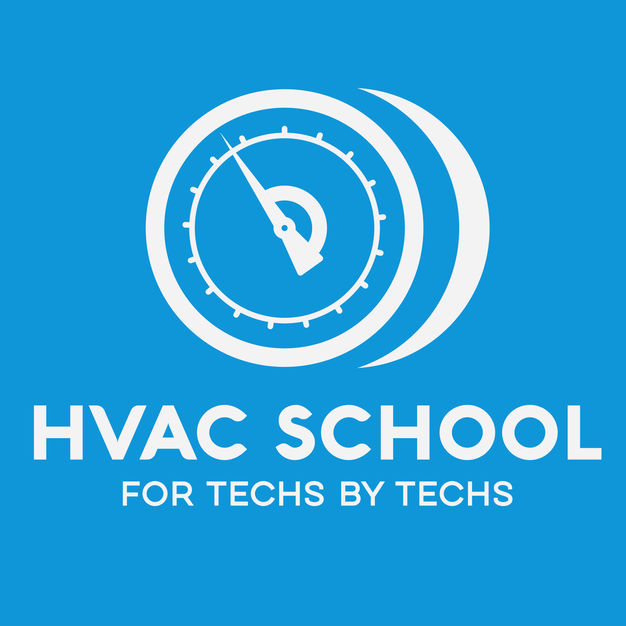 HVAC School - For Techs, By Techs
HVAC School - For Techs, By Techs
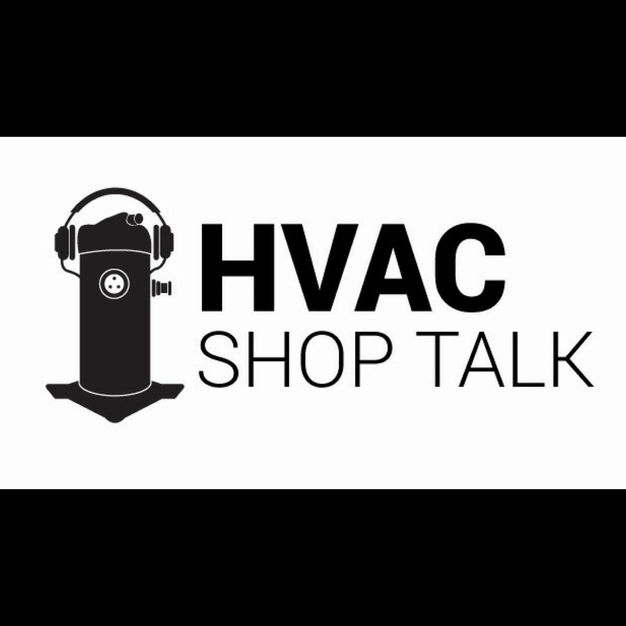 HVAC Shop Talk
HVAC Shop Talk
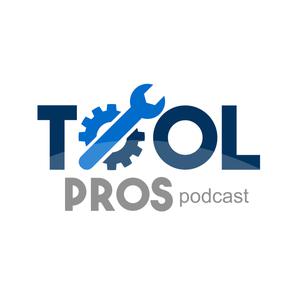 Tool Pros Podcast
Tool Pros Podcast
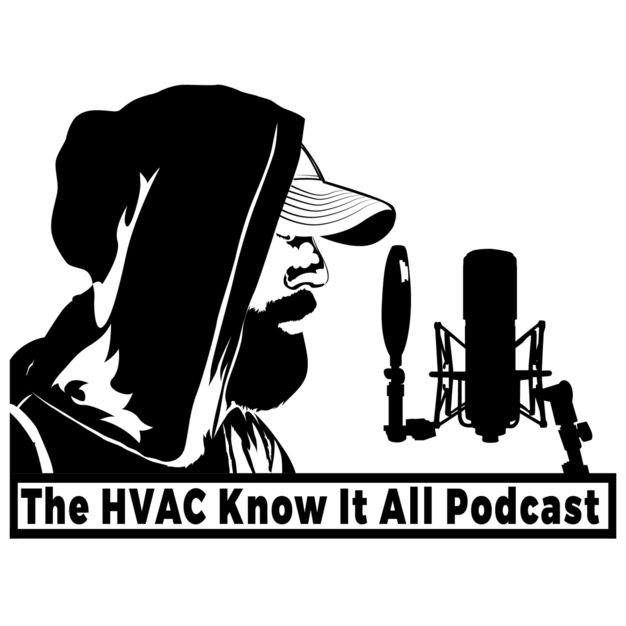 HVAC Know It All Podcast
HVAC Know It All Podcast
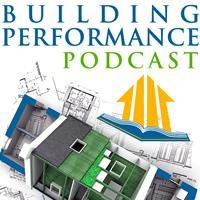 the Building Performance Podcast
the Building Performance Podcast
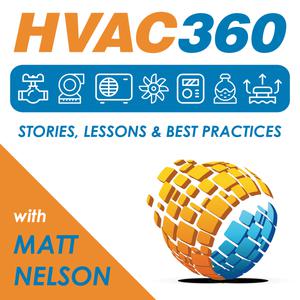 HVAC 360
HVAC 360